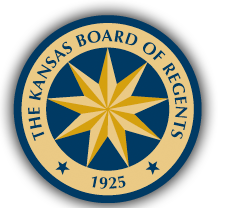 TOPEKA, Kan. — Preliminary figures released today by the Kansas Board of Regents show a slight increase at state universities and a small decrease in systemwide enrollment of full-time equivalent (FTE) students.
TOPEKA, Kan. — Preliminary figures released today by the Kansas Board of Regents show a slight increase at state universities and a small decrease in systemwide enrollment of full-time equivalent (FTE) students.
“While enrollment results this year are mixed, the Board continues to look at ways we can help more Kansans advance their education beyond high school,” said Blake Flanders, president and CEO of the Kansas Board of Regents. “Increasing the number of Kansans who earn a certificate or degree helps increase earnings for families and helps our businesses thrive.”
Across the six state universities, there was an increase of 95 FTE students (0.13 percent) compared to the preliminary census day count in 2017.
Increased enrollment was seen at Emporia State University (25 FTE students; 0.57 percent), Fort Hays State University (190 FTE students; 2.05 percent), Kansas State University (102 FTE students; 0.54 percent), and Wichita State University (176 FTE students; 1.58 percent).
Pittsburg State University saw a decrease in the number of enrollments (248 FTE students; -3.98 percent), as did the University of Kansas (151 FTE students; -0.62 percent). Washburn University, the state’s municipal university, also had decreased enrollment (79 FTE students; -1.28 percent).
Please click here for preliminary fall enrollment figures for each institution.
In the two-year sector, enrollment was down across the state’s 19 community colleges with a reported decrease of 1,112 FTE students (-2.60 percent). Enrollment increased across the state’s technical colleges, where an additional 289 FTE students (5.26 percent) are enrolled this fall compared to the preliminary census day count in 2017.
The Board of Regents opted this summer to transition from the traditional 20th-day headcount metric to a full-time equivalency metric for 2018. This change will provide uniform data across the system to the Board, to leaders from across the system, and to the public. The headcount model no longer provides the best analysis of current enrollment patterns. For example, in Academic Year 2017, 63 percent of students were enrolled on a part-time basis.
Full-time equivalency is calculated by dividing the total number of undergraduate credit hours taken in a semester by 15 and graduate credit hours by 12.